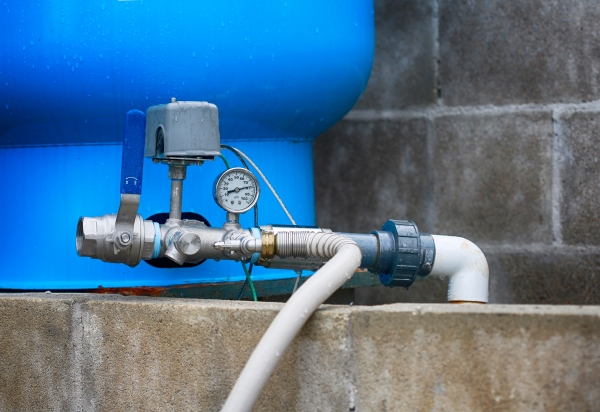How to Conserve Water At Home
Read More...
Pressure tank problems are frustrating and inconvenient, making you long for the days when your water pressure was adequate. You might ask, "Why isn't my pressure tank working?" When troubleshooting your pressure tank, you have to consider every possibility. Mr. Rooter Plumbing can send an experienced plumber to assess your water pressure issue.
If you have a pressure tank in your home, it is what provides a steady flow of water to your entire home. To understand how a pressure tank works, it is first necessary to understand what it is made of and the internal parts that allow it to work.
A typical residential water pressure tank comprises three components: the external shell, the internal bladder, and the brass outlet pipe with three-valve fittings. Inside the external shell of the pressure tank, there is an inner plastic or fiberglass bladder. This yellow tube or cylinder sits inside the outer shell filled with water. The bladder holds pressurized water until there are no more air bubbles.
Water pressure tanks are essential for a home's water supply. They can be either above ground or buried underground, and they are often located in the yard or basement of the house.
The purpose of a water pressure tank is to store water at higher pressures than usual. When there is a demand for more water, such as when someone turns on a faucet, the water pressure tank releases some of its stored pressure into the pipes that run throughout your home.
This allows the faucets to produce enough water flow to meet your needs without waiting for additional pressure from the city's water system. For this reason, residential pressure tanks are usually sized to provide enough pressure for multiple fixtures in one room, such as when two people are showering at once.
The pressure tank is the heart of your water system, providing a steady supply of high-pressure water to your home.
Pressure tanks can be made of steel or plastic. Steel tanks last longer than plastic ones but are more prone to rusting and corrosion.
If you've noticed any of these symptoms, it's probably time to replace your old pressure tank.
If you have a pressure tank, the water supply to your home should never run out. If you find yourself without water, check to see if there is water in the tank. If there isn't and all faucets in your home are turned off, something has likely gone wrong with your pressure tank.
If you notice that your water suddenly becomes discolored or smells funny, something may have gone wrong with your pressure tank. This can be caused by sediment buildup within the tank or by corrosion within its walls. Either way, it's time to call a plumber to come out and inspect your system for problems.
A waterlogged tank is a sign that the tank has been leaking or has filled with too much water. You can check for this by looking at your home's exterior pipes. If they're wet, the chances are good that there's a problem with your tank. To fix this problem, you'll want to empty the tank and replace it as soon as possible.
Pressure tanks must be installed to receive an adequate air supply from outside sources such as wind or air vents. If there isn't enough air supply to keep up with demand, the tank will become overpressurized and start venting excess water through the relief valve. This leads to uneven pressure throughout your home because each fixture will get different amounts of water depending on how much pressure it needs to operate correctly.
If you have noticed a water quality change or are facing an uneven pressure problem, it is time for some DIY. First and foremost, check out your water pressure tank to see if there are any visual defects. If your water pressure tank seems to be working fine, then the next step would be to ensure that the sediment level has not become too high in the tank. If all these checks come back clear, it may be time to replace your entire unit. It is now time to call in the professionals from Mr. Rooter Plumbing. Our plumbing service can help you get to the root of the problem and determine the most appropriate resolution.
Contact us today for an assessment of your situation.